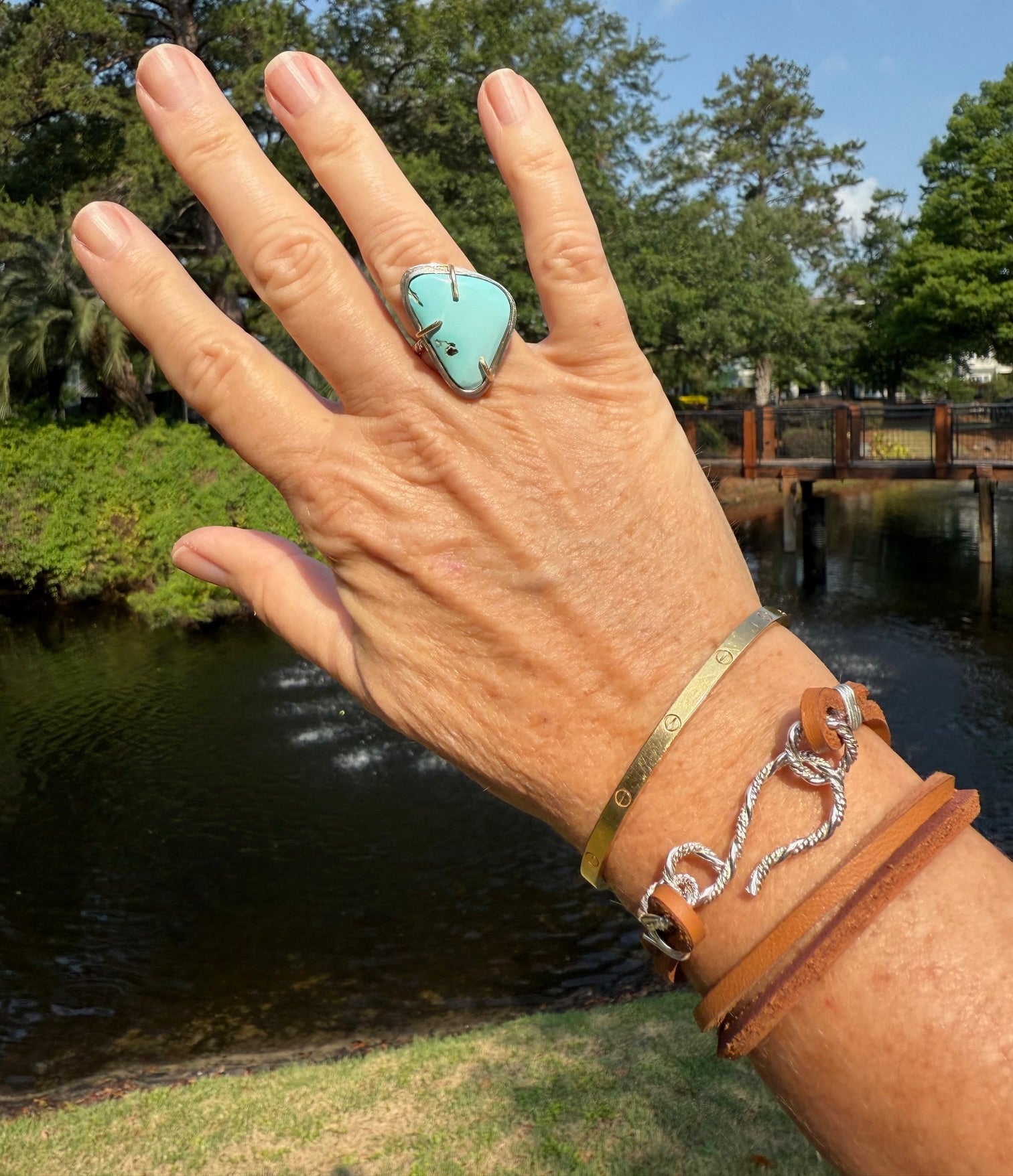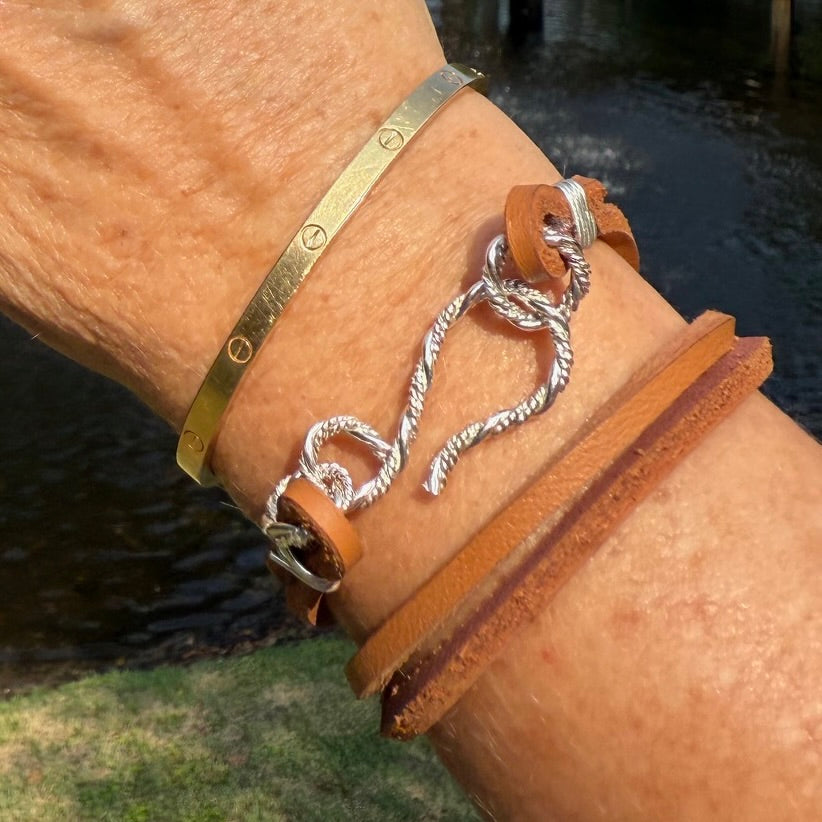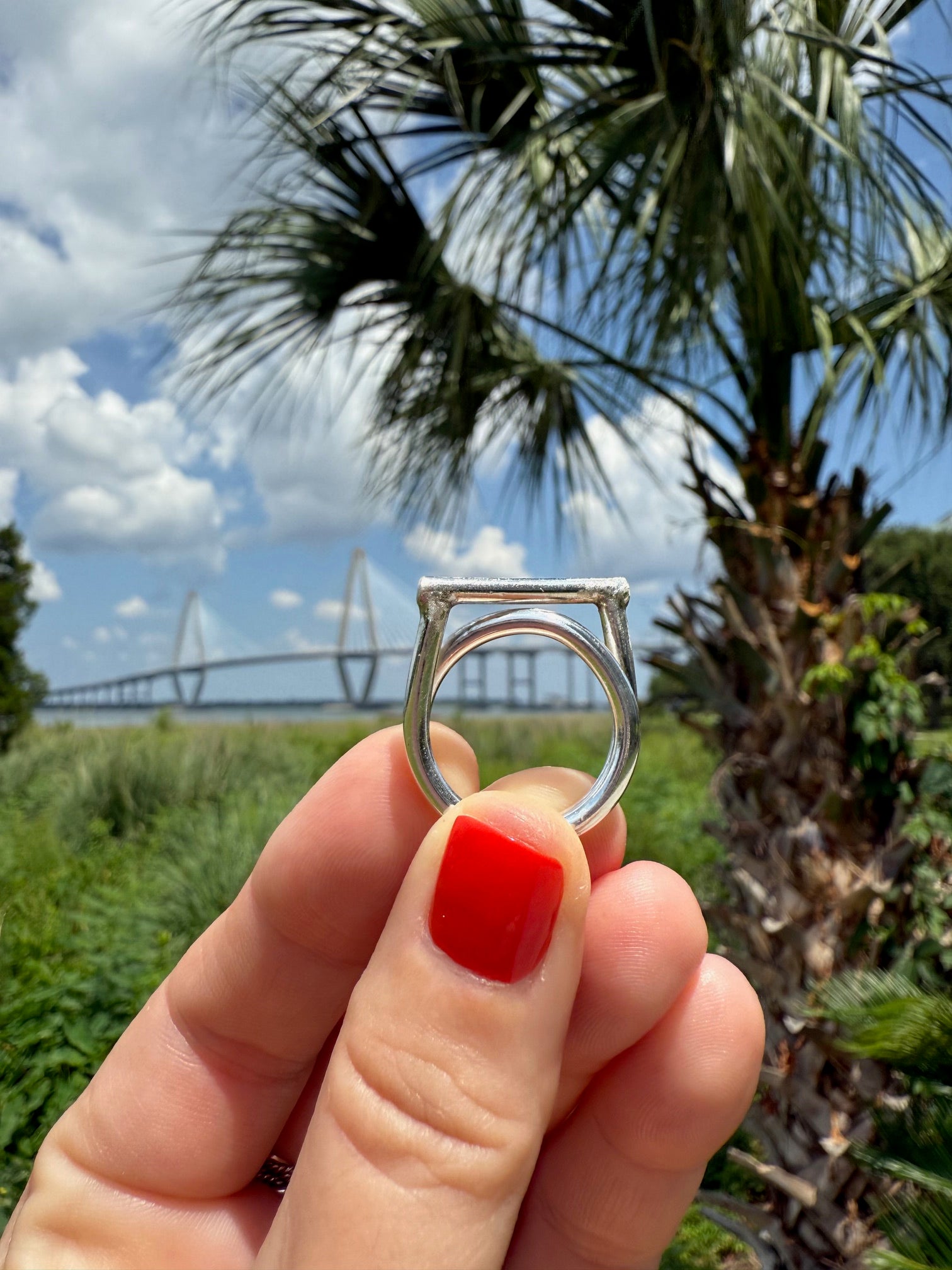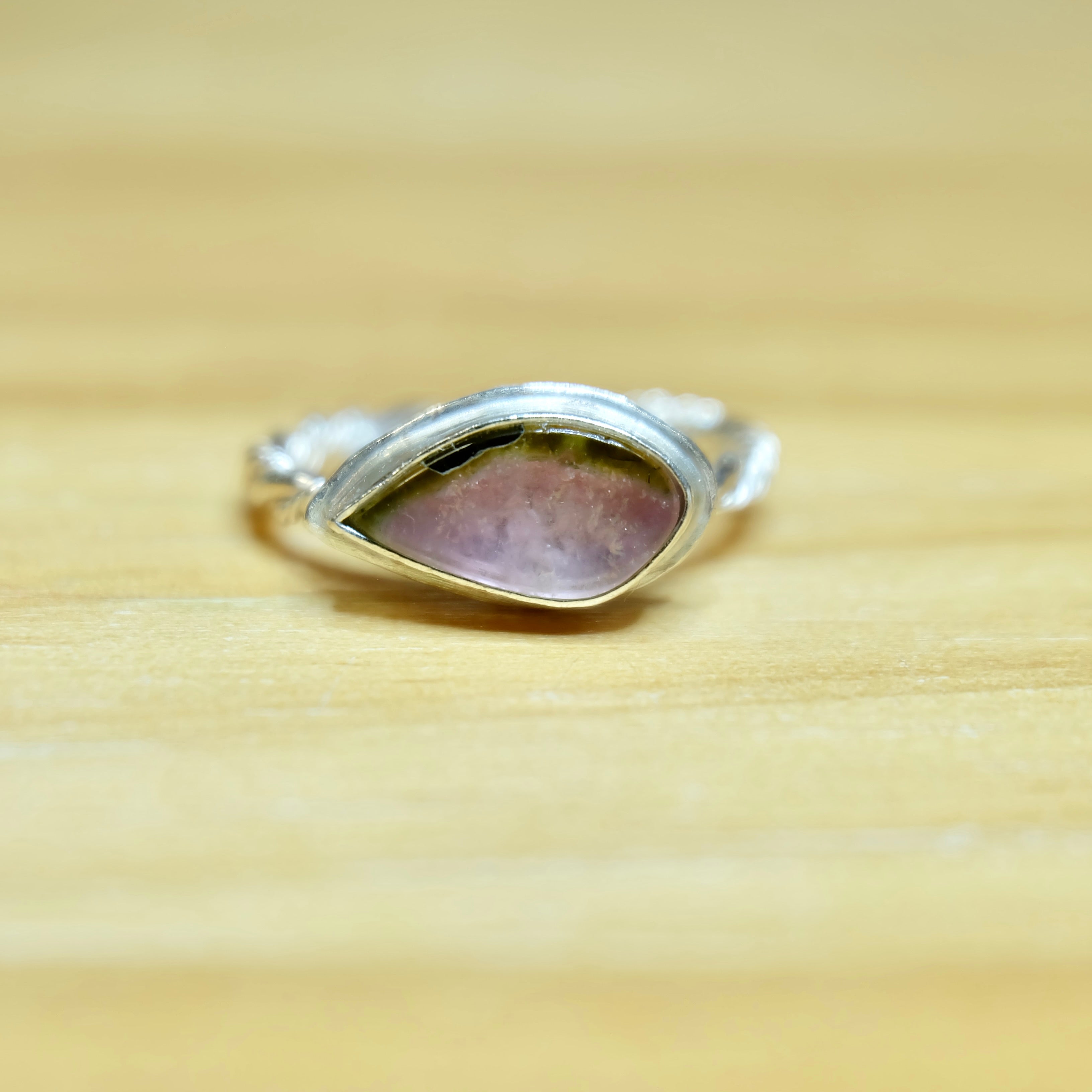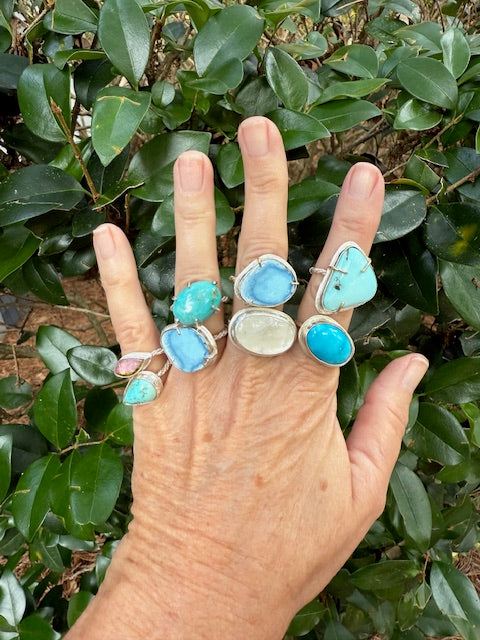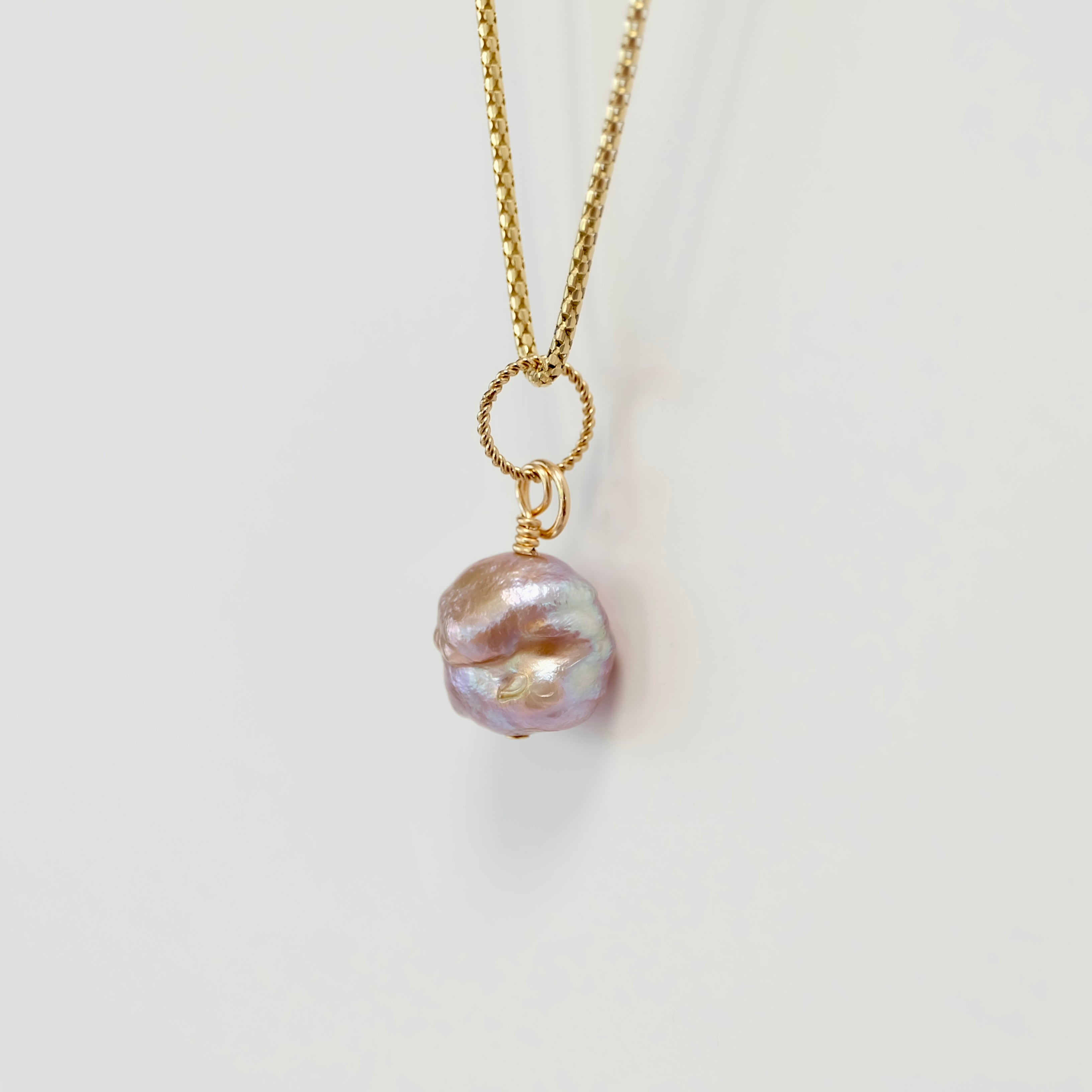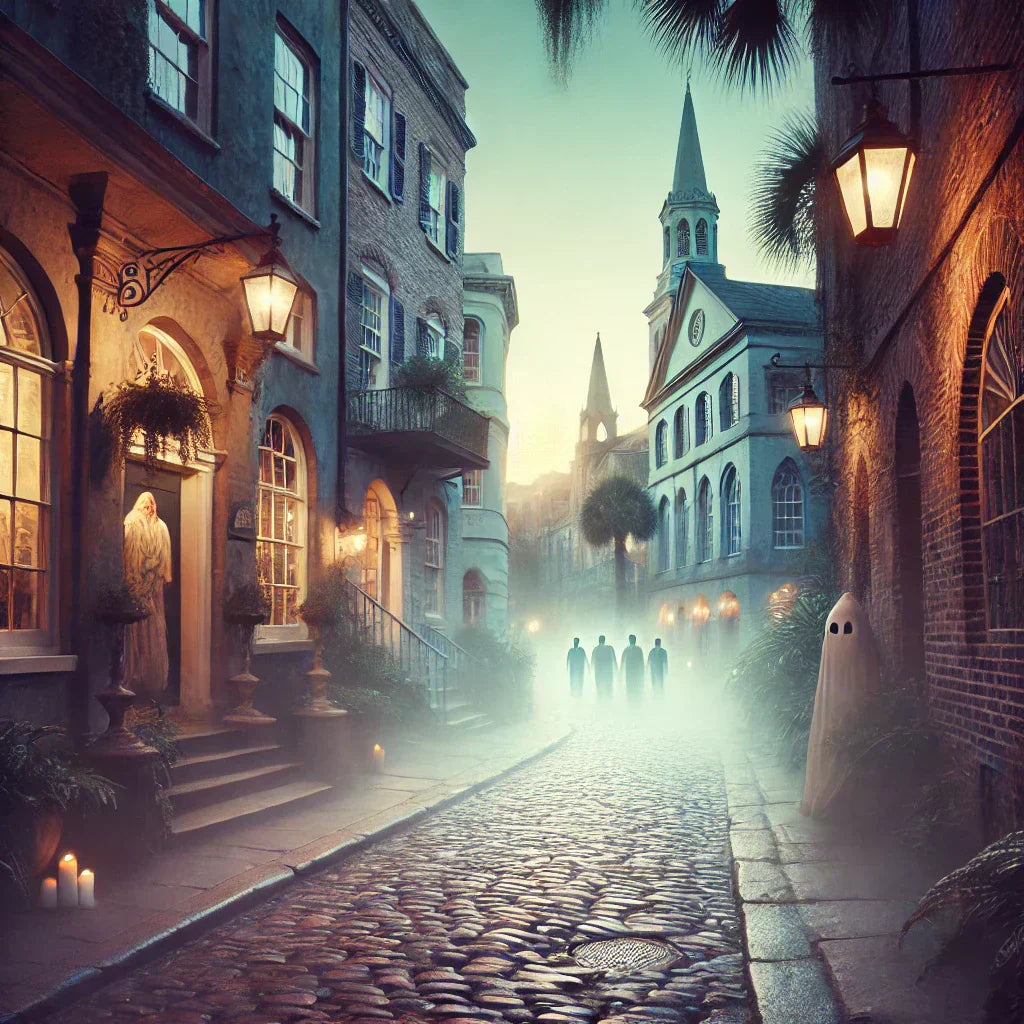
Walking Tours of Charleston: 10 Must-See Landmarks & Spirits
Share
Free Walking Tours of Charleston: 10 Must-See Stops with Stories, Scandals & Spirits
Print Our Free Guide
If you're searching for the ultimate walking tours of Charleston, you're in for a journey unlike any other. As a local, I can tell you that this city’s cobblestone streets, hidden alleyways, and elegant wrought-iron gates aren’t just picturesque—they’re steeped in stories, secrets, and shadows. Some are romantic and beautiful, others are dark and unsettling, but all are unforgettable. Whether you’re venturing out on your own or crafting your own self-guided walking tour of Charleston, these 10 must-see stops will guide you through Charleston’s haunted past, scandalous history, and stunning architecture. Get ready to walk through a city where the past is alive and every step is a story waiting to unfold.
BONUS: Ongoing free local art fairs.
Free things to do in Charleston, SC
Don't Miss This Charleston Jewelry Making Class
1. The Old City Jail (21 Magazine St)
The Old City Jail operated from 1802 to 1939, incarcerating some of the city's most infamous figures, including pirates and Civil War prisoners. Among its most notorious inmates were Lavinia and John Fisher, a couple whose criminal exploits have become entwined with Charleston's lore.
The Legend of Lavinia and John Fisher
According to popular legend, Lavinia and John Fisher owned the Six Mile Wayfarer House, an inn located six miles north of Charleston. They are said to have lured travelers into their inn, offering them poisoned tea and lodging for the night. Once the guests were incapacitated, the Fishers purportedly utilized a trapdoor beneath the bed to drop them into the basement, where they were robbed and killed. One account describes a traveler named John Peeples who, suspicious of the Fishers' intentions, declined the tea and rested in a chair by the door. During the night, he was awakened by a loud crash and discovered that the bed had collapsed into a pit below—a trap he narrowly escaped. Peeples fled and alerted authorities, leading to the Fishers' arrest.
Historical Accounts and Execution
While these tales are deeply ingrained in local folklore, historical records suggest a different narrative. Lavinia and John Fisher were indeed arrested and held at the Old City Jail, but they were convicted of highway robbery—a capital offense at the time—not murder. They were executed by hanging on February 18, 1820. Lavinia's alleged final words before her execution were defiant, reportedly stating, "If you have a message you want to send to Hell, give it to me; I'll carry it."
Hauntings and Paranormal Claims
The Old City Jail is reputed to be haunted, with numerous reports of paranormal activity. Visitors and staff have claimed to hear disembodied voices, see apparitions, and experience other unexplained phenomena, often attributed to the spirits of former inmates like Lavinia Fisher.
While the stories of the Fishers' murderous methods involving a trapdoor have become a staple of Charleston's haunted history, it's important to note that much of this narrative is based on legend rather than verified historical evidence.
Today, the Old City Jail stands as both a relic and a reinvention—its towering structure no longer a place of punishment, but of preservation and storytelling. With part of the building now used for private offices and events, and the ground floor still open for ghost tours and historical walks, it remains one of Charleston’s most compelling destinations. Whether you're drawn by its dark past, its architectural grit, or the lingering whispers of Lavinia Fisher, the jail invites visitors to walk the line between fact and folklore—exactly where Charleston’s spirit lives.
2. Rainbow Row (79–107 East Bay Street)
Charleston’s most photographed stretch is more than just pretty pastels. These Georgian-style homes were originally commercial buildings with residences above, often owned by wealthy merchants involved in the transatlantic trade—including the trade of enslaved people. Restored in the 1930s, Rainbow Row now stands as a symbol of preservation—but also a reminder of the city’s complicated past. No walking tour of Charleston is complete without it.
But there’s more to Rainbow Row than meets the eye. Locals have long whispered that one of the pastel homes is haunted by the spirit of a woman who died waiting for her husband’s ship to return. She is said to appear at the upper windows, staring out toward the harbor at dusk. Some say she once lived above one of the old merchant shops and threw herself into the street when her beloved’s vessel was lost at sea.
There are also tales of secret tunnels beneath the row, used to smuggle goods—and sometimes people—during Charleston’s more lawless days. During restoration work, construction crews reportedly found bricked-up doorways in basements, leading nowhere… or perhaps somewhere once known and now forgotten. Though beautiful and serene by day, Rainbow Row casts longer, more mysterious shadows after dark.
3. Chalmers Street
Walking down Chalmers is like walking back through time—uneven cobblestones, centuries-old buildings, and the haunting presence of Charleston’s slave trade. The street is one of the few remaining fully cobbled roads in the city, made from ballast stones once carried over on ships from Europe and West Africa. With each step, you’re literally walking on pieces of global history.
Most chilling is the role this street played in Charleston’s slave economy. Chalmers Street was the site of some of the city’s most active slave markets, and the Old Slave Mart Museum—housed in a building dating back to 1859—was once part of a complex where enslaved people were held, inspected, and sold. The building is the last remaining of its kind in South Carolina and serves as a vital, if painful, reminder of the city’s role in human trafficking.
Adding to the strange ambiance is a piece of old folklore: expectant mothers were told to ride down Chalmers Street in horse-drawn carriages to help induce labor. The cobblestones were said to be so jarring that the baby would arrive shortly after. Locals still joke about it—but considering the history embedded in those stones, the story takes on a somber edge..
Chalmers isn’t just a street—it’s a chapter in Charleston’s legacy. Beautiful, brutal, and unforgettable.
4. The Pink House (17 Chalmers Street)
This tiny pink gem is one of the oldest buildings in Charleston, dating back to the 1690s, and its walls are steeped in secrets. Constructed from rosy Bermuda stone, the building has lived many lives—as a tavern, a brothel, and possibly a private residence for women whose affairs made them unwelcome in polite society.
Unlike Rainbow Row, which owes its pastel tones to intentional paint choices, the Pink House’s color originally came from the materials themselves. Built from 18-inch-thick Bermuda stone, a coral-based rock imported from the West Indies, the structure took on its signature blush hue naturally. Its roof features curved terracotta tiles, which, according to legend, were molded over the workers’ thighs to achieve their shape. Although the building spans three floors, each level contains just a single, compact room. In modern times, the house has been stuccoed and painted pink to help protect the historic stonework and preserve its now-iconic appearance.
Its strategic location on Chalmers Street, near the heart of Charleston’s colonial trading hub, made it a natural gathering place for sailors, smugglers, and socialites alike. The tavern that once operated here was known for its strong rum and looser morals. It’s said that gentlemen of status would sneak away from nearby formal dinners to meet their mistresses in candlelit rooms upstairs. One tale tells of a governor’s wife, veiled and cloaked, slipping through the back door to meet a forbidden lover—an Irish sea captain—only to vanish mysteriously when their affair was uncovered. The governor, known for his strict public morality and ironclad political alliances, was said to have discovered the affair through a carelessly dropped glove embroidered with the initials of the captain. Furious and humiliated, he reportedly used his influence to ensure the captain's ship was impounded, his men arrested, and the lover himself thrown in chains.
But when officials came to question the woman, she had disappeared. No public notice was given. No search party dispatched. Some say she was smuggled out of Charleston through underground tunnels beneath the tavern, disguised in a serving maid’s clothes. Others whisper that she was locked away in one of the sealed rooms upstairs, left to waste in silence for bringing shame upon the governor’s name. Her name was wiped from church records and society pages alike.
To this day, visitors sometimes report hearing faint sobs from the upper rooms, or see the flicker of candlelight through curtains long drawn. A silhouette in a high-collared dress has been seen gazing from the second-story window, as if watching for sails that will never again dock in Charleston’s harbor.
More than one historian believes the house was once part of an informal network of high-end brothels that catered to Charleston’s elite. There are whispers of coded messages exchanged via flower deliveries, and a ledger book, allegedly found in the early 1900s, listing aliases of prominent men alongside cryptic descriptions of services rendered.
Today, it’s an art gallery—but strange sounds continue to echo through its narrow halls. Some visitors report footsteps pacing upstairs when no one else is there, or the scent of perfume lingering in the air. And at night, in the flickering streetlight, some claim to see a woman in a velvet dress watching from the second-story window, waiting for a lover who never returned.
5. Dueler’s Alley (Philadelphia Alley)
Tucked between Queen and Cumberland Streets, this narrow passage has a deadly history. Known as Philadelphia Alley, it was the site of many 18th- and 19th-century duels—fought over honor, politics, and love.
One of the most famous duels involved Dr. Joseph Brown Ladd, a young poet and physician, and Ralph Isaacs, a former friend turned rival. The two had once been inseparable—fellow intellectuals who arrived in Charleston from Rhode Island, drawn to the city's promise of prosperity and refinement. Ladd, often called the 'Whistling Doctor' for his habit of cheerfully whistling down the streets, was admired for both his medical skill and his romantic poetry. Isaacs, a merchant with sharp business instincts, was equally charismatic, though more guarded. They were known to frequent the same salons and theaters, sharing laughter and literary debate late into the night.
But the closeness didn’t last. Their friendship unraveled slowly, then violently, when both men fell for the same woman—Amanda. Jealousy and wounded pride turned warm camaraderie into cold disdain, and in a city where honor meant everything, their feud was destined to end in tragedy. The two men had a falling out over a woman—Amanda, a local actress whom both men adored. She was known for her beauty, her stage presence, and her charm that seemed to spark tension wherever she went. Rumors swirled that she had promised her affection to both men at different times, perhaps not out of malice, but in a bid to remain cared for in a harsh, male-dominated world. Some say she enjoyed the rivalry, while others believe she feared what it would become. Tensions escalated between Ladd and Isaacs, and despite efforts to avoid violence, the two men met one foggy evening in the alley with pistols in hand. Some say Amanda tried to intervene, but jealousy had already taken root.
Accounts say Ladd fired into the air, hoping to end the duel without bloodshed. But Isaacs shot true, striking Ladd in the leg. He limped away and died ten days later of infection. It’s said his spirit never left. Visitors have reported the sound of limping footsteps echoing behind them, and some claim to see a shadowy figure in 18th-century dress watching silently from the shadows.
Locals say if you walk it alone, you might hear footsteps behind you—or a whispered challenge. A must-see stop on any haunted walking tour of Charleston.
6. The Dock Street Theatre (135 Church Street)
Originally opened in 1736, the Dock Street Theatre holds the title of America’s first building dedicated exclusively to theatrical performances. But this isn't just a theater—it's a stage layered with centuries of fire, ruin, rebirth, and an ensemble cast of ghostly residents.
The original building burned in the Great Fire of 1740, and the current structure—built in 1809 as the Planters Hotel—rose from its ashes. The hotel quickly became one of Charleston’s most luxurious yet scandalous establishments, hosting wealthy travelers, performers, and rumored affairs in its day. It’s said that the spirits of both the performers and patrons never left.
The most famous of these spirits is “Netty,” a courtesan who once entertained wealthy clients at the hotel. She is believed to have died on the balcony during a violent storm and is now often seen drifting silently through the second-floor mezzanine in a tattered red dress. Actors have also reported strange shadows flitting behind the curtains, props moved without explanation, and sudden cold spots on stage.
Another ghost said to haunt the Dock Street Theatre is that of Junius Brutus Booth—father of John Wilkes Booth—who reportedly once stayed there. His ghost has been spotted pacing the halls in a long, old-fashioned coat, mumbling lines from Shakespeare in a gravelly voice. Whether driven by madness or memory, his spectral performances continue long after the curtain falls.
Even visitors feel it: an unsettling presence just behind you in the aisles, a breeze that follows no draft, a whisper echoing in the rafters. The Dock Street Theatre isn’t just haunted by history—it’s possessed by it. Attending a show here might earn you more than you paid for. Just don’t sit in Netty’s favorite balcony seat… unless you’d like company.
Bonus Bit of Romance: Where Stephen Colbert Met His Wife
The Dock Street Theatre isn’t just haunted by the past—it also played a starring role in a modern love story. Charleston native and late-night host Stephen Colbert met his wife, Evelyn, right here. The two were both attending the Spoleto Festival USA, and during a performance at the Dock Street Theatre, Colbert noticed Evelyn in the audience. He later spotted her again at the nearby College of Charleston and, as he tells it, he “just knew.”
Their connection deepened quickly, and the couple eventually married—turning a chance encounter in one of Charleston’s most iconic buildings into the beginning of a lifelong partnership. Among all the whispered ghost stories and echoes from centuries past, the Dock Street Theatre also carries a real story of fate and falling in love.
7. St. Philip’s Church and Graveyard (142 Church Street)
One of the oldest congregations in the city, St. Philip’s has seen centuries of Charleston's spiritual and social life. Its towering steeple is a defining feature of the skyline, and its bells once marked both celebration and tragedy. Notable figures like Vice President John C. Calhoun are buried here—but some say he doesn’t rest easy. Paranormal sightings and strange photos have been captured near his tomb, especially when the fog rolls in from the harbor.
Beneath the church’s historic charm lies a deeper layer of mystery. Some believe there were once secret tunnels beneath St. Philip’s, connecting the church to nearby buildings as part of an escape route during times of siege or invasion. Though no confirmed maps remain, whispered stories suggest clergy used these passages to move important figures—and perhaps forbidden lovers—in and out of view. One legend tells of a young novice priest who fell in love with the daughter of a British loyalist during the Revolutionary War. Their secret rendezvous, conducted beneath the city in candlelit silence, were said to have lasted months before betrayal struck—he was discovered, imprisoned, and died before ever seeing her again.
Other versions tell of hidden doors behind the altar and bricked-off corridors beneath the vestry. Locals have claimed to hear footsteps where no one walks, or feel sudden drafts where walls meet solid ground. It’s said that in quiet moments, the faint echo of whispered promises can be heard in the chapel, like vows once spoken in secret and never fulfilled. These tales, passed down in hushed voices, suggest that while the church offers salvation above ground, below it may rest the remnants of love, loss, and escape.
The Sailor and the Heiress: A Charleston Tragedy
There’s also the tale of a young woman from a prominent Charleston family who fell in love with a sailor far beneath her station. They met in secret near the churchyard gates, exchanging love notes left tucked between the stones. When her family discovered the affair, the sailor was supposedly driven away or worse—some say his body was found at the base of the church bell tower. On moonlit nights, a shadow is said to linger near the gate, still waiting for a signal that never comes. Some versions of the tale say the young woman, heartbroken and forbidden to speak his name again, became a recluse and returned to the gate each evening, long after anyone believed her sailor would return. There are even whispers that she was buried in an unmarked grave within the churchyard itself—a punishment for defying her family’s wishes.
Visitors have claimed to hear weeping near the wall late at night or to feel a chill that runs through the stones where the notes were once left. Others say the ghostly image of the sailor has been spotted standing just beyond the churchyard fence, as if still hoping for forgiveness, or perhaps vengeance. Like so many Charleston legends, what began as love ends in longing—and lingers in the air for those willing to feel it.
It’s a peaceful but eerie stop on any historical walking tour of Charleston.
8. The Powder Magazine (79 Cumberland Street)
Built in 1713, this is the oldest public building in South Carolina. It once stored gunpowder for Charleston’s defense and was fortified with thick walls and sand to prevent explosions. But beyond its military function, The Powder Magazine has witnessed its share of scandal, secrecy, and possibly even sabotage.
During the Revolutionary War, British sympathizers were rumored to have plotted within these very walls, conspiring to seize the supply of black powder for their own causes. Some say a fire that broke out nearby in 1779 was no accident—it was a failed attempt to cover up stolen munitions and erase evidence of a betrayal. Though the flames never reached the magazine, the story remains buried beneath official records.
There’s also the lesser-known tale of a forbidden love between a French munitions officer and the daughter of a prominent Charleston merchant. They met in secret within the cool, stone chambers of the Powder Magazine, hiding away letters in cracks of the thick walls. When her father found out, the officer was dismissed from his post under suspicion of espionage, and the young woman was reportedly sent to France—never to return. Visitors today claim to feel sudden cold gusts in rooms without windows, and some swear they’ve heard soft weeping echoing along the stone walls.
Some say the spirits of colonial soldiers still guard it. Visit the museum to learn more—but many say the feeling of being watched isn’t just in your head.
9. The Pirate House (141-145 Church Street)
Just across from St. Philip’s stands one of Charleston’s most legendary residences—known locally as the Pirate House. Located at 141–145 Church Street, this building is believed to have housed real pirates during the city’s rowdier colonial years. Edward “Blackbeard” Teach himself was rumored to have passed through Charleston more than once, and this house was said to be a favorite haunt of his crew. Underground tunnels supposedly connect the cellar to the harbor, allowing smugglers and pirates to slip ashore undetected. These tunnels have never been officially confirmed, but locals whisper that the house once served as a key point for the pirates’ illicit trade routes, with hidden compartments where stolen goods were stored.
The most notorious pirate believed to have frequented this house is Stede Bonnet, the so-called 'Gentleman Pirate.' Bonnet, a wealthy plantation owner who turned to piracy in the early 18th century, was known for his lavish lifestyle and his ill-fated pirating ventures. Though not the traditional pirate in terms of experience, Bonnet’s reckless approach to piracy and his subsequent clashes with fellow pirates—including Blackbeard himself—earned him a legendary status. It’s said that Bonnet’s ghost still haunts the house, unable to complete the business he started.
Bonnet was eventually captured and executed for his crimes, but the house remains a silent witness to his final days, with tales suggesting that his ghost roams the halls, tormented by the loss of his ill-fated treasure and perhaps his unresolved ties to Charleston. Locals have claimed to see a figure in a tricorn hat, standing by the gate, as if he is still waiting for his ill-gotten fortune to be returned to him.
The ghostly presence is not limited to Bonnet. Passersby often report cold spots, flickering lights, and shadows moving behind closed shutters. Those brave enough to venture near the house at night might feel the oppressive weight of history—the feeling of being watched from the windows, or hear muffled voices echoing from inside the building, as if the pirates are still discussing their next heist. Even the air around the house seems to hold a peculiar chill, as if it holds the secrets of treasure yet to be discovered.
10. The Unitarian Church Graveyard (8 Archdale Street)
I saved the best for last. Creepy and beautiful, this graveyard feels more like a forgotten garden than a cemetery. The Unitarian Church allowed nature to reclaim its dead, letting vines and moss grow wild. Ghost tours often end here for good reason: many believe spirits wander freely. The most famous legend? The ghost of Annabel Lee—thought to be the inspiration for Edgar Allan Poe’s poem—is said to linger near her supposed grave.
But why her spirit lingers in Charleston is part of the city’s ghostly lore. According to legend, Annabel Lee was a young woman whose love story ended in tragedy, much like the poem that carries her name. The poem itself speaks of a love so strong and pure that not even death could sever it: "But we loved with a love that was more than love— / I and my Annabel Lee." In the poem, Poe describes how the narrator’s love for Annabel was envied by the angels in heaven, who took her away from him.
In Charleston, it’s said that Annabel Lee's spirit never found peace after her untimely death. Many believe that Poe’s poem was inspired by a young woman who passed away under mysterious circumstances, with the chilling belief that she was taken by forces beyond the natural world—perhaps even by the envy of the gods. While there’s no solid proof that Poe’s Annabel Lee lived in Charleston, the connection is so strong that locals swear they can hear her ghostly cries carried on the breeze.
Her grave, believed to be one of the oldest in the Unitarian Church Graveyard, is said to be a focal point for ghostly sightings. Those brave enough to wander through the cemetery after dark sometimes report hearing soft whispers or a melodic hum—a haunting lullaby that Annabel is said to sing to her lost lover, still waiting for his return. Visitors have also claimed to see a glowing apparition near her grave, a figure with flowing hair and an otherworldly glow. She seems to wander between the gravestones, lost in an eternal vigil for a love that was never fully realized.
But Annabel Lee isn’t the only restless spirit rumored to walk this hallowed ground. One tale speaks of a young widow who mourned her lost love by visiting the graveyard every night for decades. She would leave flowers by her husband’s tombstone, even when no one could remember his name. But legend has it that on the night she died, a voice called her name as she made her way to his grave for one final visit. The next morning, her body was found just inside the gate, with a bouquet still clutched in her hand. Some say her spirit never left, appearing late at night, holding her bouquet and whispering the name of her lost love. Visitors have reported strange sightings—an image of an older woman bent over a grave, but when they approach, she vanishes without a trace.
The history surrounding the graveyard is also tied to the city’s turbulent past. The church itself, built in 1772, was involved in the city’s first abolitionist movements, and the graveyard contains several headstones of those who fought for freedom during the Civil War. One particular grave belongs to a former enslaved woman who is believed to have lived to a remarkable old age. Her ghost is said to roam near her grave, and some claim they’ve heard her humming songs of liberation as the sun sets. Her presence is often felt in the cool evening air, with visitors saying they’ve felt a soft breeze brushing past them when they stand near her grave.
The graveyard is also the site of one of Charleston’s most bizarre scandals. In the 19th century, a prominent Charleston family’s heir was buried in an unmarked grave after his sudden death. Rumor had it that he had been involved in a secret affair with a servant in the family’s estate—a scandal so great that the family chose to bury him in anonymity. Many years later, it was revealed that the heir’s tombstone had been deliberately hidden behind overgrown ivy and moss, and his remains were unearthed only after a local historian uncovered his story. The remains were eventually reinterred in a public ceremony, but some say the young heir still visits his final resting place, appearing at dusk in the form of a shadowy figure with a melancholic expression.
There’s a persistent belief among locals that the spirits of those buried here are not at rest. Visitors often report strange occurrences: footsteps behind them when no one is there, a sudden drop in temperature, or a fleeting figure moving between the tombstones. Some say the spirits of Annabel Lee and the widow meet, whispering among the graves, waiting for a love lost in time to be remembered once again. Others have claimed to see a glowing light hovering above the graves, as if the dead are trying to communicate.
Final Tips for Your Walking Tour of Charleston:
- Wear comfortable shoes (seriously, the cobblestones are no joke).
- Bring water and sunscreen.
- Respect all historic sites—especially cemeteries.
- If you’re into ghosts, consider walking just after dusk… but don’t say I didn’t warn you.
Charleston’s streets are alive with stories waiting to be uncovered. From the whispers of long-lost loves to the eerie echoes of haunted pasts, every corner, cobblestone, and creaky door holds a tale of intrigue, scandal, and mystery. Whether you’re a history buff, a ghost enthusiast, or simply someone seeking the beauty of Charleston’s architecture, there’s no better way to experience it than on foot. These ten stops are just the beginning of your unforgettable walking tour of Charleston—one where the city’s past will never be far behind you. So, lace up your shoes, trust your curiosity, and let Charleston’s secrets reveal themselves one step at a time. Are you brave enough to walk where the spirits linger?
Best Charleston Ghost Tours
If you're eager to dive deeper into Charleston's ghostly lore, consider embarking on one of the best Charleston ghost tours available. With this self-guided walking tour, you can explore the city at your own pace while uncovering some of Charleston’s spookiest stories and most haunted locations. Whether you want to hear about the tragic tale of Annabel Lee at the Unitarian Church Graveyard or follow the shadowy footsteps in Dueler’s Alley, this guide will lead you through Charleston’s paranormal history. Perfect for any ghost hunter or history lover, this tour will have you wondering what’s hiding behind every corner.
Self-Guided Walking Tour of Charleston
Our Self-Guided Walking Tour of Charleston is the ideal way to discover the city’s haunted past at your own pace. With ten must-see stops and plenty of intrigue along the way, you'll be stepping back in time as you uncover Charleston's most scandalous, mysterious, and ghostly spots. Whether you’re after love stories gone wrong or the haunting echoes of long-lost spirits, this tour will guide you through it all. Feel the city’s secrets whisper in your ear as you walk through its cobblestone streets and historic landmarks.







